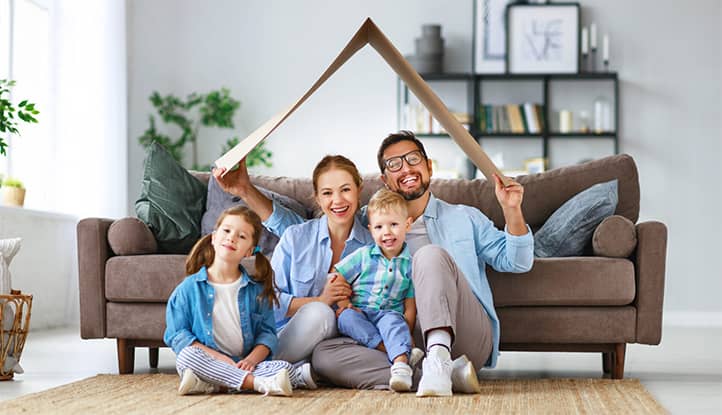Every day, without even noticing it, we engage in a dialogue with the objects around us. An ordinary teapot in the kitchen, a worn-out carpet in the living room, or a gleaming multicooker—all these items not only serve utilitarian functions but also subtly shape our habits, influence our mood, and even reflect deep-seated traits of our character.
Why does one person happily brew coffee in a cezve, inhaling the aroma and savoring the process, while another thoughtlessly pours beans into a coffee machine, prioritizing speed and convenience? The choice between manual labor and automation is not just a matter of taste but a kind of psychological test.
Household routine is not just a series of mechanical actions. It is a complex system of rituals through which we express our values, fears, and even dreams. A cluttered desk might speak not only to disorganization but also to a fear of constraints, while a love of minimalism is not always a sign of inner harmony—sometimes, it’s a mask for perfectionism. Even the color of curtains or the shape of chairs affects our well-being: some interiors energize us, others soothe, and others oppress.
Ultimately, our home is a materialized map of our psyche. The objects we choose (or that “stick” in our lives) reveal more about us than we think. They betray our attachments, our openness to new experiences, our attitude toward comfort, and even unresolved inner conflicts. So is it any surprise that, by changing our surroundings, we sometimes change ourselves?
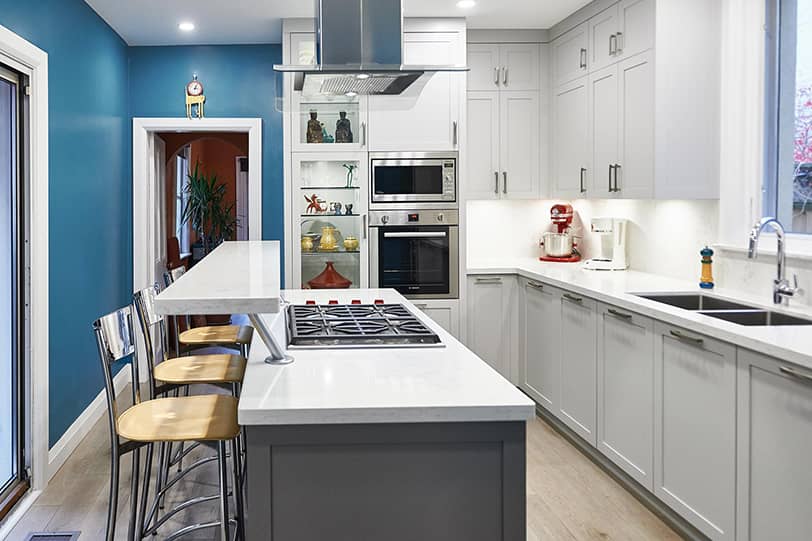
Kitchen: Where Habits Are Born
The kitchen is not just a place where food is prepared. It is a psychological laboratory where small but telling scenes from our lives play out daily. The way we boil water, stir soup, or choose kitchen utensils can reveal more about us than it seems. Here, among pots and spoons, habits are formed that then seep into other areas: some people act quickly and impulsively, while others meticulously plan every step. And if you look closely, even an ordinary kettle or spoon becomes a key to understanding our character.
Why does someone use the same knife for years, while another immediately buys the latest gadget? The answer lies not only in practicality but also in our attitude toward time, comfort, and even… our own past. Kitchen habits are a reflection of our inner world, and today we’ll explore how the simplest objects betray our hidden attitudes.
Kettle vs. Thermo Pot – The Impatient vs. The Planners
An ordinary electric kettle and a thermo pot—both boil water, but the difference between them is vast, and it’s not just about functionality. The kettle is speed, impulse, instant gratification. It’s chosen by those who dislike waiting: hot water is needed here and now, even if it has to be reheated in half an hour. Such people often act spontaneously, rely on intuition, and don’t always consider long-term consequences.
The thermo pot, on the other hand, is a tool for those who think ahead. It maintains temperature for hours, saving time and electricity. Its owners are usually more calculated: they dislike unforeseen situations and strive to minimize discomfort. If someone buys a thermo pot, they likely approach life the same way—planning budgets, making to-do lists, and avoiding acting on a whim.
Interestingly, the choice between these appliances can change with age: younger people often prefer the kettle, while older ones opt for the thermo pot. But there are exceptions: if a free-spirited creative person suddenly gets a thermo pot, it might mean they’re learning self-discipline. Conversely, if a perfectionist switches to a regular kettle—perhaps they’re trying to become more spontaneous.
Multicooker as a Symbol of Modern Life
The multicooker is a true hero of our time. It doesn’t just cook—it does so without human involvement, freeing people up for other tasks. And this is its core psychological meaning: it’s perfect for those living in multitasking mode. If you use a multicooker regularly, chances are you value your time and strive to optimize processes.
But there’s another side. Some see the multicooker as a “killer of culinary creativity”—after all, it reduces cooking to pressing a button. People who insist on cooking only by hand often subconsciously defend rituals that connect them to traditions, family, or culture. For them, it’s not just about feeding the household but infusing food with emotion.
Curiously, the multicooker can also influence eating habits. Those who used to rely on ready-made meals start eating healthier—simply because it now requires less effort. It even changes our relationship with time: the delayed start function allows us to “reserve” the future (“breakfast porridge will be ready in the morning”), giving a sense of control over one’s life.
Wooden Spatulas vs. Silicone – Traditionalists vs. Innovators
Wooden spatulas are warm, “living” tools that develop character over time. They’re chosen by those who value tradition, natural materials, and slow rituals. Often, such people lean toward conservatism not just in the kitchen but in other areas: they take time to adjust to new things but remain loyal to their principles.
Silicone spatulas are a product of modernity. They’re practical, hygienic, and functional. Their fans usually adapt more easily to change, are open to experiments, and don’t hesitate to discard old items if a more convenient alternative appears.
But there’s a third option—when both coexist peacefully in the kitchen. This speaks to flexibility: the person balances tradition and progress. For example, they might use silicone for frying but wood for kneading dough because “that’s how you feel the soul of the food.” Such people usually get along well with different generations: they understand both grandma’s recipes and their kids’ love for gadgets.
The kitchen is a mirror of our everyday decisions. How we boil water, cook food, or choose kitchen tools reveals our attitude toward time, comfort, and even family values. And if you ever feel the urge to change something in your life—maybe you should start with the kitchen cabinet.

Living Room: The Space That Characterizes Us
The living room is the heart of the home, a place where we entertain guests, unwind after work, and spend time with family. But few realize that the furnishings in this room can reveal a great deal about our personality and lifestyle. Every object here—from the rug to the sofa—is not just a piece of decor but a kind of message to the world about who we are and how we want to be perceived.
Interestingly, the living room often becomes a battleground between aesthetics and functionality, between the desire to impress and the pursuit of comfort. Some create meticulously designed spaces where every item has its place, while others prefer an atmosphere of creative chaos. Both are reflections of our personality. Let’s explore how the most ordinary pieces of furniture reveal our psychological traits.
Rug – The Boundaries of Personal Space
A rug in the living room is not just a floor decoration but a powerful psychological marker. People who lay down large, plush rugs typically value coziness and security. For them, home is a fortress where they can hide from the outside world. Often, such individuals are more introverted but create an atmosphere of warmth and safety around themselves.
Those who prefer bare floors or small rugs are usually more open to the world and practical in their daily lives. They dislike anything that restricts free movement, and this may reflect their life philosophy: minimal constraints, maximum freedom. Interestingly, many creative people consciously avoid rugs because they “absorb” space and energy.
The color and pattern of the rug also matter. Bright, patterned rugs are chosen by emotional, expressive personalities, while solid, neutral ones are preferred by those who value calm and order. And if the rug in the living room looks like a museum exhibit (no one dares to step on it), it might indicate the homeowners’ perfectionism.
Sofa and Its “Social Role”
The sofa is perhaps the most important piece of furniture in the living room, and its choice says a lot about how we structure social interactions. Large, plush sectional sofas are usually bought by sociable, hospitable people for whom home is a place of constant gatherings with friends and relatives. They can’t imagine life without company and are always ready for unexpected visitors.
Firm, compact sofas are preferred by those who value personal space. Often, these are introverts or very busy people who see the living room more as a place for solitary relaxation than for noisy get-togethers. Interestingly, the shape of the sofa also matters: corner models are chosen by families, while straight ones are favored by those living alone or who appreciate minimalism.
The sofa’s placement is a story in itself. If it faces the door, it might suggest some degree of anxiety (a subconscious desire to control the entrance). A sofa facing the window is often chosen by dreamy types, while furniture arranged around the TV is a sign of a family that values shared leisure time.
Bookshelves and Their Secrets
Bookshelves in the living room are always more than just storage for books. They can be either an honest reflection of our interests or a carefully curated facade. If the shelves are crammed with well-worn volumes mixed with souvenirs and photographs, you’re looking at someone for whom books are a living part of life. Such people usually don’t care what others think and value content over appearance.
Neat, stylish shelves with books in a uniform style (or even just decorative spines) often indicate a desire to make an impression. This isn’t necessarily bad—it’s just that the person cares about how they’re perceived. Interestingly, empty shelves or shelves with only a few books might belong to highly practical people (they read everything digitally) or those who consciously cultivate a modern, “uncluttered” aesthetic.
A separate story is books displayed “for show.” Classics no one has read or trendy intellectual bestsellers with untouched pages are an attempt to say, “I am what you see me as.” But psychologists note that over time, such “decorations” often start to irritate the owners themselves because they create a sense of falseness.
The living room is a stage where we unwittingly play ourselves. Every object here, from the rug to the bookshelf, tells a story about our habits, fears, and desires. Take a closer look at your living room: you might discover something new about yourself. And if you want to change something in your life—start by rearranging the furniture. Sometimes, external changes help trigger internal ones.
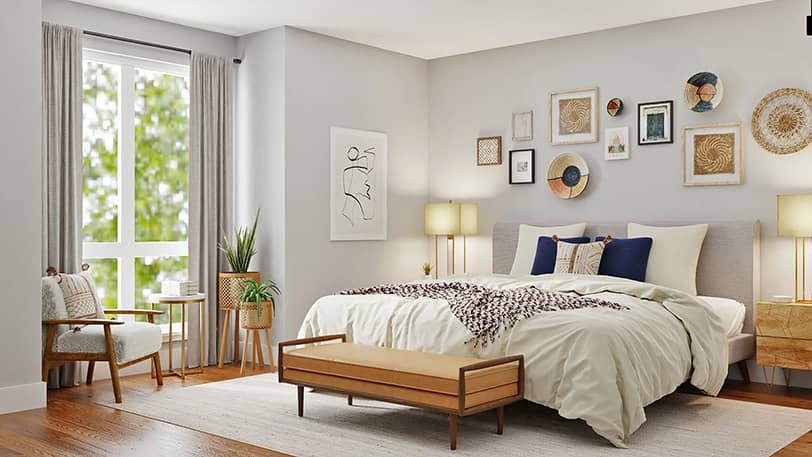
Bathroom and Bedroom: The Rituals That Change Us
Our private spaces—the bathroom and bedroom—are like sanctuaries of everyday life. Here, away from prying eyes, we perform our most personal rituals that shape our sense of self. It is in these rooms that our habits manifest most vividly and honestly, without regard for social expectations.
Psychologists assert that how we organize our spaces for sleep and morning/evening routines is directly linked to our emotional state. These rooms become mirrors of our inner world—sometimes more accurate than we’re willing to admit. Let’s examine how ordinary objects and actions in these spaces reveal our deep-seated psychological attitudes.
Toothbrush and Its Placement
The simplest hygiene item can tell us surprisingly much about its owner. A toothbrush standing neatly in a cup, bristles up, is a sign of systematic thinking. Such people value order not just in the bathroom but in life. They tend to plan, often make to-do lists, and prefer stability.
A carelessly tossed toothbrush, frequently left on the edge of the sink, is typical of more spontaneous personalities. These people live by the “here and now” principle, dislike strict rules, and may suddenly change plans. Interestingly, during times of stress, even organized individuals often start neglecting toothbrush placement—the first sign of inner chaos.
Modern electric toothbrushes with stands are often chosen by perfectionists. For them, cleanliness isn’t the only priority—the process must be technologically advanced. Meanwhile, people who stick to simple models for years are usually conservative and reluctant to change habits without good reason.
Towels: Why Some Arrange Them by Color While Others Hang Them Randomly?
The towel organization system in a bathroom is a real psychological test. A neat stack, sorted by size and color, indicates a love of control. Such people often feel discomfort when something falls outside their system. They might get irritated if a guest hangs a towel on the “wrong” hook.
Multicolored towels hung haphazardly are typical of creative personalities. Convenience matters more to them than aesthetics. Often, they don’t even notice if towels are crooked or clash in color—their brains simply don’t register these “imperfections.”
A separate category consists of people who use towels strictly by purpose: one for the face, another for hands, a third for the body. This is a sign of detail-oriented thinking. Such individuals tend to compartmentalize not just hygiene items but also life spheres, clearly defining roles in relationships.
Bedding: How Fabric and Color Choices Affect Sleep Quality and Emotions
Our bedding preferences are a window into the subconscious. Cotton sets in pastel tones are usually chosen by those seeking peace and stability. For them, the bedroom is a refuge from daily stress. Bright, saturated colors are preferred by people who subconsciously crave emotional stimulation, even if they appear restrained during the day.
Silk bedding is often associated with luxury, but psychologists note that it’s not just about status. Silk lovers are usually highly sensitive to tactile sensations, which may indicate a delicate emotional nature. Flannel sheets are the choice of those subconsciously seeking comfort and warmth.
Pillow size matters too. People who sleep with multiple pillows often need emotional support. One flat pillow is a sign of practicality and independence. And the habit of sleeping without a pillow at all may indicate unconventional thinking.
Our private spaces are where social masks come off. How we organize our bathrooms and bedrooms is directly tied to our deepest needs and fears. By paying attention to our habits in these rooms, we can better understand ourselves and perhaps find ways to improve the quality of our rest and daily lives.
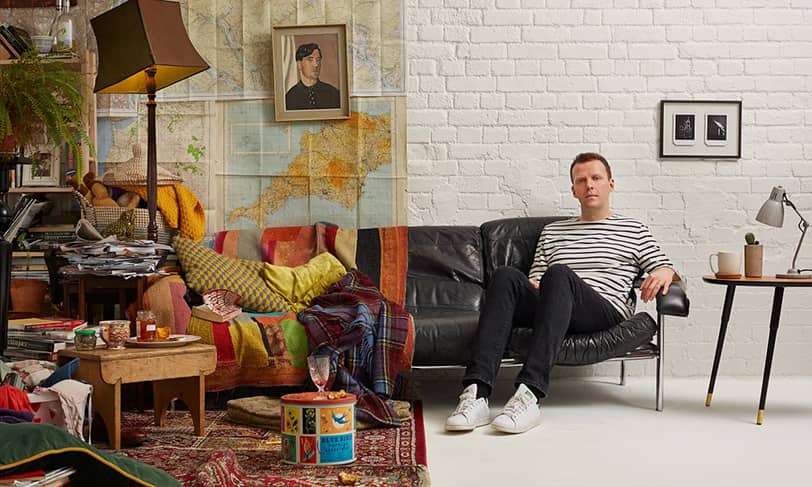
Mess vs. Order: What Your Home Says About You
A home is a materialized map of our psyche. The state of our living space isn’t just about cleanliness or aesthetics—it’s a genuine psychological profile. Some people feel physical discomfort at the sight of a speck of dust on a shelf, while others live happily for years amid creative chaos. In this clash between order and disorder lie deep-seated aspects of our personality.
Interestingly, our attitude toward cleanliness and spatial organization forms in childhood but can change dramatically throughout life, reflecting inner transformations. Periods of obsessive tidying often coincide with attempts to take control of one’s life, while creative mess may signal inner freedom… or a crisis. Let’s explore what truly underlies our habits in organizing domestic space.
Why Some Can’t Stand Clutter While Others Thrive in It
People who pathologically detest disorder often have an anxious personality type. For them, chaos in their surroundings equates to chaos in their mind. Every misplaced item subconsciously registers as an unfinished task, creating constant background tension. Such individuals tend toward perfectionism and control—they don’t just clean, they create an “ideal” system where everything has its place.
Those comfortable amid creative clutter typically have nonlinear thinking. Their brains process visual chaos differently—it doesn’t distract them and may even aid cognition. Many creative people deliberately surround themselves with objects that stimulate associative thinking. However, it’s important to distinguish creative disorder from pathological hoarding—the latter often stems from anxiety disorders.
Psychologists note a paradox: under stress, the first group cleans even more intensely (to regain control), while the second lets their space deteriorate further (a sign of apathy). These are telling indicators of emotional states.
The Phenomenon of “Anchor Objects” (Why We Keep Tickets, Cards, and Old Gadgets)
Anchor objects are physical vessels for memories and emotions. An old movie ticket, a grandfather’s broken watch, childhood drawings—these items serve an important psychological function. They help maintain connections to meaningful moments, loved ones, and our past selves.
Sentimental people often surround themselves with such anchors. For them, each object represents a story, an emotion, part of their identity. Conversely, minimalists who ruthlessly purge “clutter” seek to shed the weight of the past for a lighter, future-oriented existence.
Notably, anchor objects can also be negative—like keeping a broken appliance that “could still be fixed.” This often reflects an unwillingness to accept failure or relinquish illusions. Psychologists advise: if an item hasn’t been used in over a year and lacks genuine sentimental value, it may be time to let go.
The Psychology of Space
Our relationship with order and possessions is a complex system intertwining character, upbringing, emotional state, and life circumstances. There’s no “right” or “wrong” approach—only what works for you. Yet understanding these mechanisms can help consciously organize space so it truly supports rather than burdens. Sometimes, small environmental changes lead to significant shifts in self-perception and quality of life.
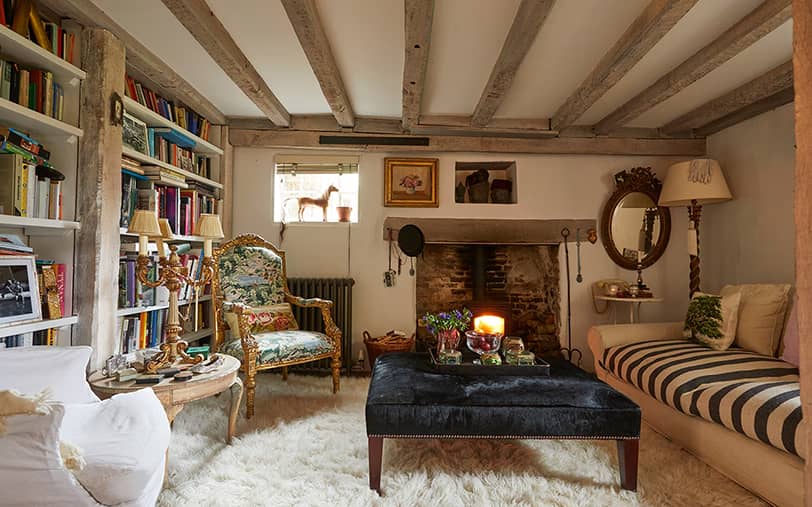
Conclusion
At first glance, the ordinary objects that surround us—a kettle, a sofa, a toothbrush, or a multicooker—appear to be mere silent witnesses to our daily lives. Yet in reality, they do more than serve utilitarian functions. They participate in shaping our habits, influence our emotional state, and even reflect deep-seated personality traits. What many dismiss as mundane routine turns out to be a complex system of psychological rituals, where every action and every object carries hidden meaning.
Interestingly, this connection works both ways: if our character determines how we organize our space, can changing our environment, in turn, influence our personality? Psychologists are certain it can. Imagine giving a devoted minimalist—someone who meticulously controls every item in their home—a multicooker, an appliance that requires planning and stockpiling. At first, it might irritate them, but gradually, it could teach them spontaneity and flexibility.
Or consider another experiment: offering a lover of creative chaos a storage system with strict rules. Over time, external order may begin to structure their thinking as well. Of course, these changes don’t happen overnight, but the mere attempt to step out of one’s comfort zone through everyday objects can become the starting point for inner transformation.
Our home is more than just a place where we live. It is a materialized version of our personality, a physical embodiment of our habits, fears, and aspirations. The objects we choose (or that “stick” in our lives), the things we discard, the ways we organize our space—all these are pieces of a larger puzzle called “I.” Perhaps the next time you consider rearranging furniture or buying new kitchenware, it’s worth asking: Does this align with my true self? Or, conversely, could it help me become who I want to be? After all, sometimes the path to self-discovery and change doesn’t begin with psychology books but with a simple look around our own home and the everyday objects that surround us.
